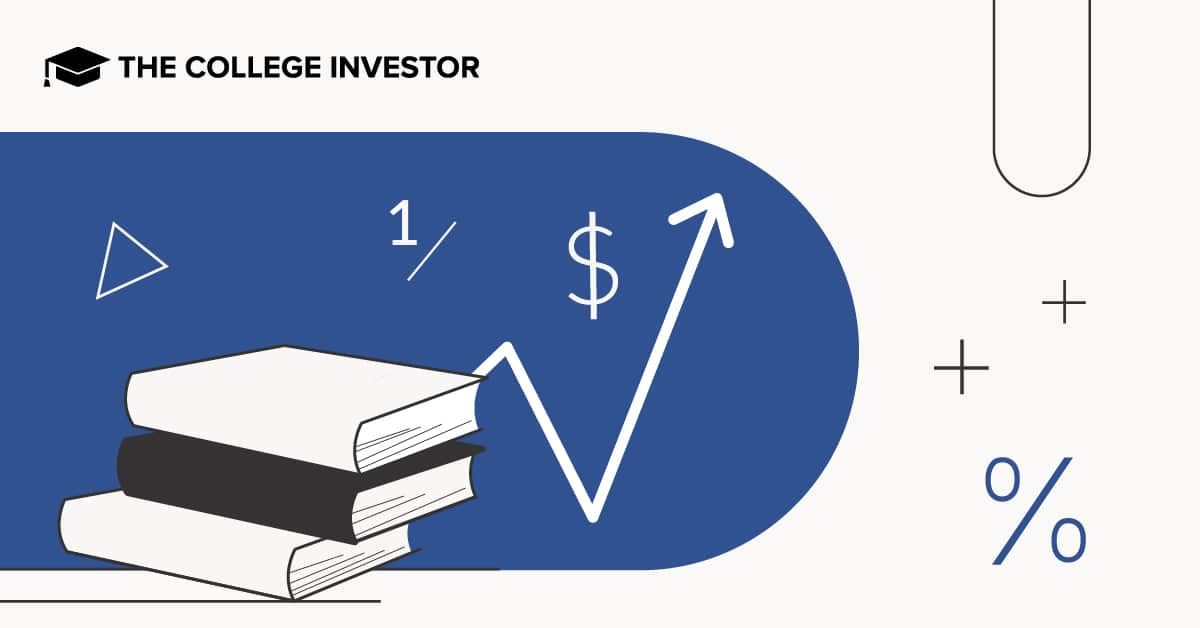
There interest rates on student loans are at a 20-year high, and they keep on rising. When you combine these higher interest rates with the high cost of college, it can be daunting for students and their families.
What’s going on? Why is there this apparent contradiction between the two federal policies concerning student loan interest rates?
We break down why student loan interest rates are rising, what you can expect as a current borrower, and what future borrowers need to know.
Interest Rates Are Rising
Interest rates on new federal student loans for undergraduate students have nearly tripled since 2020. They increased over the last few years:
Although interest rates are rising, they are just now slightly above the historical average. The 2020 to 2021 interest rate was a record low, making subsequent interest rates look higher.
However, it’s likely that interest rates will continue to increase.
How Student Loan Interest Rates Are Set
Interest rates on federal student loans change on July 1 and continue for all new loans made through June 30 of the following year. The interest rates are fixed and do not change over the life of the loan.
The new interest rates are set by a formula based on the high yield of the last 10-year Treasury Note auction in May, plus a margin.
For example, the high yield on the May 8, 2024 auction was 4.483%. Adding the 2.05% margin to this yields the 4.99% interest rate on undergraduate Federal Direct Stafford Loans. The margin is 3.6% for graduate Federal Direct Stafford Loans and 4.6% for Federal Direct Grad PLUS and Parent PLUS loans.
The recent increases in interest rates on federal education loans aren’t intentional, but rather the result of a formula for interest rates enacted by Congress in the Higher Education Act of 1965. The current formula has been in effect since 2013.
Interest Rates Are Influenced by Inflation Rates
Inflation is caused by a mismatch between the supply and demand for goods and services and when this happens, the Federal Reserve tries to control inflation rates by increasing interest rates. Theoretically, this will decrease the demand for goods and services because it makes it more expensive to borrow money to pay for stuff. It also causes the stock market to drop, making investors feel less wealthy and therefore less likely to spend money.
The Federal Reserve Board likes to maintain an inflation rate below 2%.
The Consumer Price Index (CPI-U) increased above 2% in March 2021, and has since been above that level. It’s currently still above 3.5%.
When the Federal Reserve increases the Federal Funds Rate, it influences the interest rates on 10-year Treasury Notes, which affects the interest rate on federal student loans.
The Federal Reserve
The Federal Reserve has kept the Fed Funds rate steady at 5.25 – 5.50% this year, with rates expected to decrease slightly in the fall.
The Federal Reserve has been holding steady because, so far, the higher rates have proved ineffective at cooling off inflation. Increasing interest rates will not solve the supply chain problems or the poor fiscal management that are causing at least some of the current high inflation rates.
Luckily, the interest rates on undergraduate Federal Direct Stafford Loans are capped at 8.25%, preventing the interest rates from going higher. The interest rates on graduate Federal Direct Stafford Loans are capped at 9.5% and Federal Direct PLUS Loans are capped at 10.5%.
The Impact of Interest Rate Increases
Increases in interest rates do not have as much of an impact as borrowers assume.
Let’s take an example of a $10,000 loan with a 10-year repayment term.
What % Of Interest It Represents (Per Payment) | ||
|---|---|---|
So, even with a big increase in interest rates, the majority of each payment will still be devoted to repaying the principal or initial amount of the loan, not the interest.
Of course, the monthly loan payments have more interest and less principal at the start of the loan and are gradually increasing, which makes the overall amount you borrowed more expensive. Slightly more than half of each payment is applied to interest during the first and second years of a 10-year repayment term.
If You Decide to Take Out Private Loans
There are ways to address the impact of increasing interest rates, if you plan on taking out student loans for the next school year.
Even though variable interest rates may initially be lower than fixed interest rates, variable interest rates have nowhere to go but up. (Note: The interest rates on federal student loans are fixed.) However, private student loans often offer a choice between fixed and variable interest rates.
When considering a private student loan, the fixed interest rates are likely to be lower on shorter repayment terms than longer repayment terms.
You might also consider looking at non-profit lenders for private loans. These lenders have lower cost of funds due to being able to borrow using tax-free municipal bonds. Check out the list of non-profit lenders here.
Get Your Credit Score
Remember to check your credit reports for free at annualcreditreport.com at least 30 days before applying for a private student loan. Get any errors corrected by disputing them. The creditor has 30 days to confirm the accuracy or remove the incorrect information. Correcting inaccurate information will increase your credit scores, which can yield a lower interest rate.
If your credit isn’t the best, apply for private student loans with a creditworthy cosigner. Lenders base interest rates on the credit scores of the borrower and cosigner, whichever is higher.
Choose a Shorter Repayment Term
A shorter repayment term will reduce the total interest paid over the life of the loan, but will increase the monthly payment. Choosing a longer repayment term will reduce the monthly loan payments, but will increase the total payments over the life of the loan.
Refinance your student loans if you have a higher interest rate from several years ago. (Beware of refinancing federal loans into a private loan, since federal student loans have better benefits, including longer deferments and forbearances, income-driven repayment terms, the payment pause and interest waiver, and loan forgiveness and discharge options.)
The table below compares top student loan lenders that also offer refinancing.
Sign up for autopay, where your monthly student loan payment is automatically transferred from your bank account to the lender. Most lenders offer a 0.25% or 0.50% interest rate reduction as an incentive.
Don’t forget to claim the student loan interest deduction on your federal income tax return. This is an above-the-line exclusion from income for up to $2,500 in interest paid on federal and private student loans.
Final Thoughts
Remember, if you already have existing federal student loans, the upcoming increases won’t affect you—it only applies to new loans for the upcoming school year.
However, it still may be disconcerting to have rates rising at such an expensive time, but if you are going to take out private loans, make sure you understand how much you’d need to repay and if it’s worth losing out on the perks of federal loans. For example, a private lender may not be as flexible to help you in the future if you are struggling to repay the loan.




